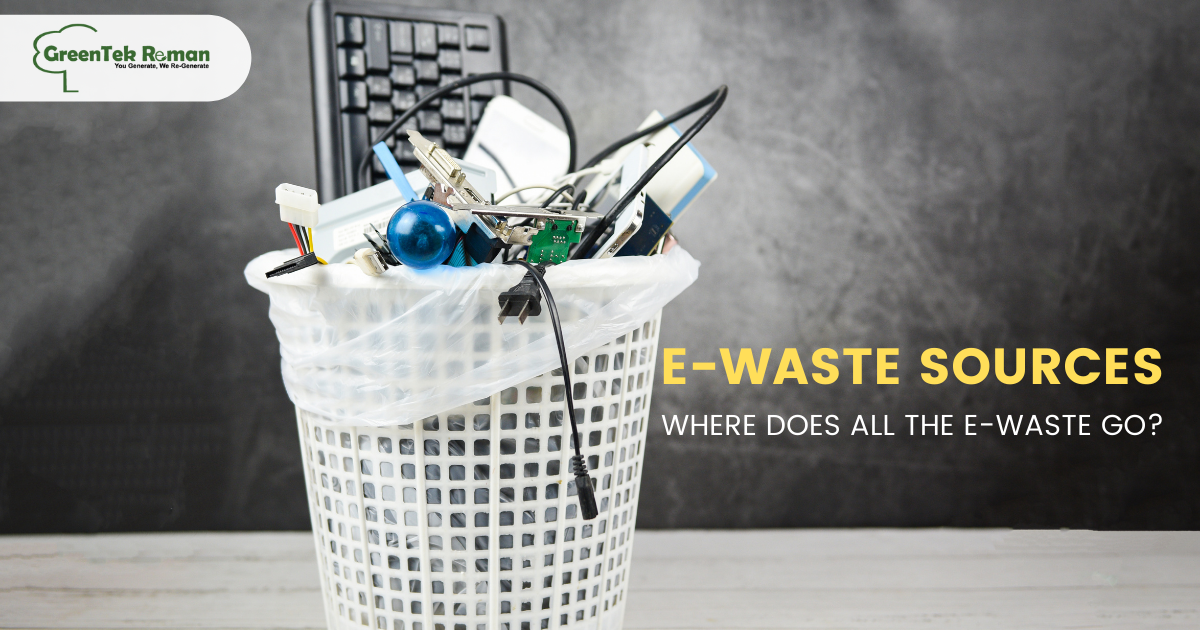The Complete Guide to E-Waste Sources, How They Impact You and What You Can Do About It
E-Waste Sources – Where does all the Electronic Garbage End Up?
E-waste is a major problem, and unfortunately, e-waste sources are something we use daily. The United States is one of the most significant contributors to it, and they generate about 3.3 million tons of electronic waste every year.
We all know that we throw our old phones, TVs, and other gadgets in the trash or recycle bin, but where do they go from there?
The answer – most likely to a landfill or an incinerator.
It is estimated that this amount of e-waste could fill up a football field six times over. This will only increase as the need for electronics continues to grow, which means more e-waste will be generated as well.
What is E-Waste?
Not many people are aware of what e-waste is. It is commonly referred to as just computers or mobile phones, but other things fall into this category.
Some of the most common e-waste sources also include televisions, air conditioners, refrigerators, microwaves, and other electronic devices. The term e-waste has been used to refer to all types of electrical or electronic equipment that have come out of the use or are no longer wanted.
Where does E-Waste come from?
E-waste is usually the outcome of people purchasing new electronics. And it does not take them long to become an e-waste source. As soon as electronics are no longer in fashion, they are tossed out or given away to used stores or pawn shops.
E-waste can be found in many places including landfills, incinerators, and recycling centres. It is often the outcome of habits that many people share.
How Does E-Waste Impact Us & the Environment?
In recent years, the idea of recycling has been changing. In the past, recycling was seen as a way to protect our environment from pollution and degradation. Today, it is seen as a way to mine for gold and other valuable materials that can be used to manufacture new products.
What happens to this e-waste? The answer is that they are dumped in developing countries. As a result, toxic chemicals from these devices have been released into the environment and have contaminated waterways and landfills. Some ship tis e-waste source back to their country of origin, where they will be either disposed of or recycled using unsafe methods like burning them or throwing them in landfills.
Electronic waste is a growing issue. Every year, as much as 50 million tons of e-waste is produced and the numbers are expected to climb higher. E-waste disposal has serious impacts on the environment and human health.
The impacts of e-waste on the environment are worse than they seem. A significant proportion of hazardous materials such as mercury, lead and phosphor can be released into the atmosphere or into waterways when e-waste sources are disposed improperly. This leads to contamination in our water supply and soil as well as increased death rates due to cancer and respiratory illnesses caused by these toxic substances.
The Solutions to Fixing the E-Waste Problem
What can be done about electronic waste in India?
India is one of the world’s largest producers of electronic waste, and it is estimated that by 2020, the country will have an annual production of 41 million tonnes. It would be a major environmental hazard to leave all this e-waste uncollected. Here are the key steps that the government needs to take to prevent India’s pollution levels from rising:
1) The government should implement recycling policies for all kinds of e-waste sources. This would not only help control the e-waste problem but also reduce carbon emissions.
2) The government should work with manufacturers to make products that are easily recyclable or repairable.
The problem of e-waste will not go away anytime soon. There are many solutions to solving the e-waste problem and sustainable use of our e-waste sources, but we must find an economical, sustainable, and safe solution to actually fix the problem.


